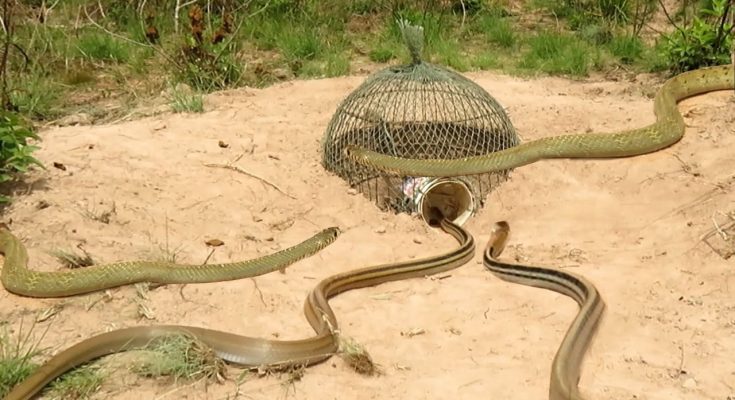The First Creative DIY Snake Trap Technology Made from Plastic with Net and Pen Bird
In a quiet rural village nestled near the jungle’s edge, survival often requires ingenuity. Faced with the growing threat of snakes slithering into homes and gardens, a young farmer decided to design his own snake trap using everyday materials. With no access to expensive equipment, he turned to creativity and resourcefulness.
The first version of his DIY snake trap was simple but smart. Using a large plastic bottle, some strong netting, and a pen bird as bait, he constructed a low-cost yet effective trap that surprised even experienced villagers.
He began by cutting and shaping the plastic into a funnel-like entrance—easy for the snake to slide into, but impossible to exit. Around the plastic, he wrapped fine but durable netting, reinforced with bamboo sticks. The pen bird was placed safely inside a small cage at the center of the trap—visible, chirping, and protected, yet enough to lure any curious serpent nearby.
To test his trap, he placed it in a known snake path near the rice fields. By morning, his efforts paid off—a long green snake was caught, harmlessly tangled inside the trap, unable to reach the bait or escape. The villagers gathered in awe, praising the simple yet innovative solution.
Word of his success spread quickly. People from neighboring villages came to learn and replicate the design, especially because it was safe, humane, and made from materials they already had.
This DIY snake trap wasn’t just a clever invention—it was a symbol of how traditional knowledge and creativity could solve real problems in rural life. It kept both people and animals safe, and proved that sometimes, the best tools are born from necessity and a sharp mind.




